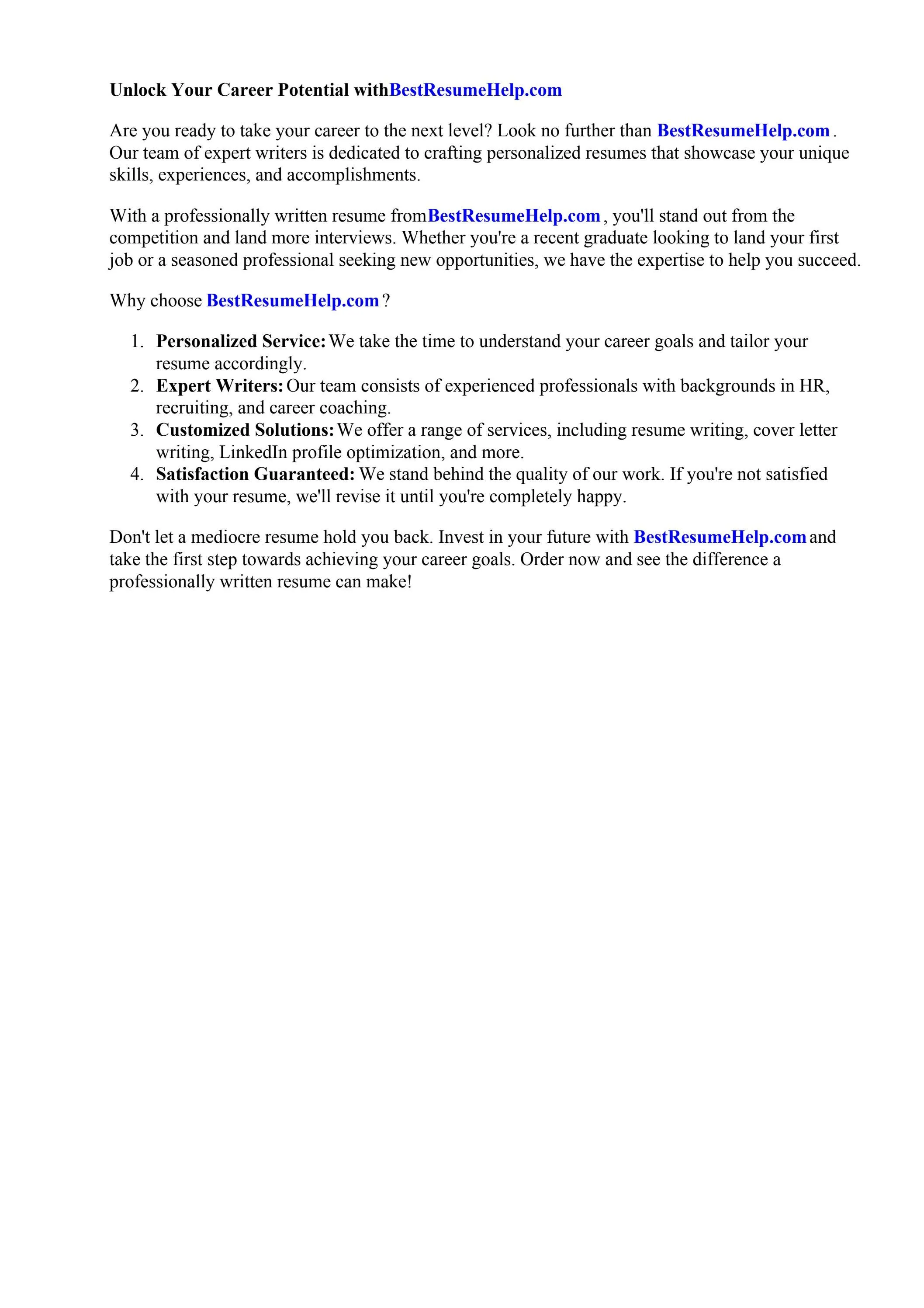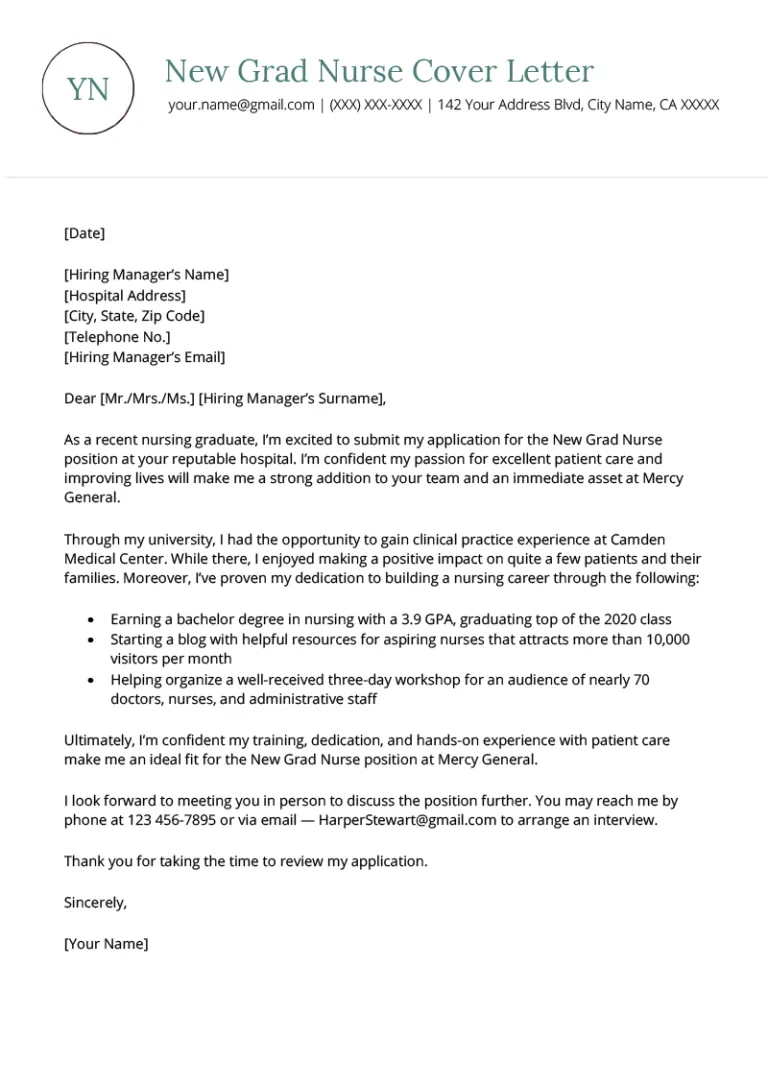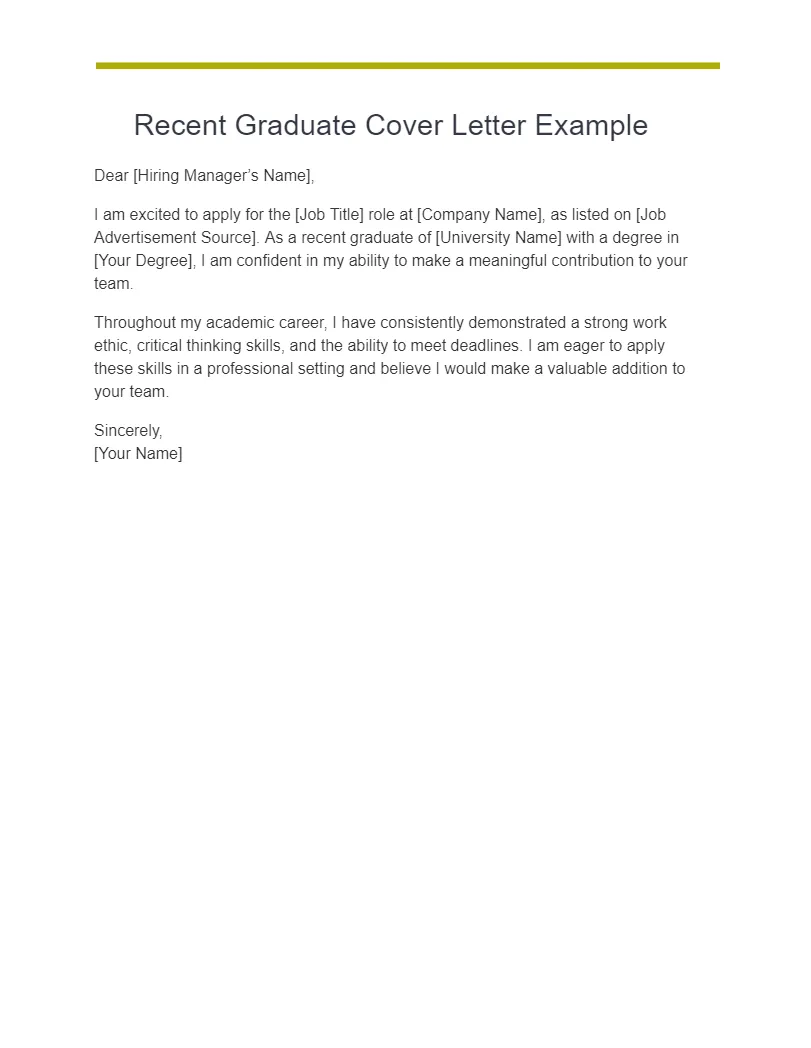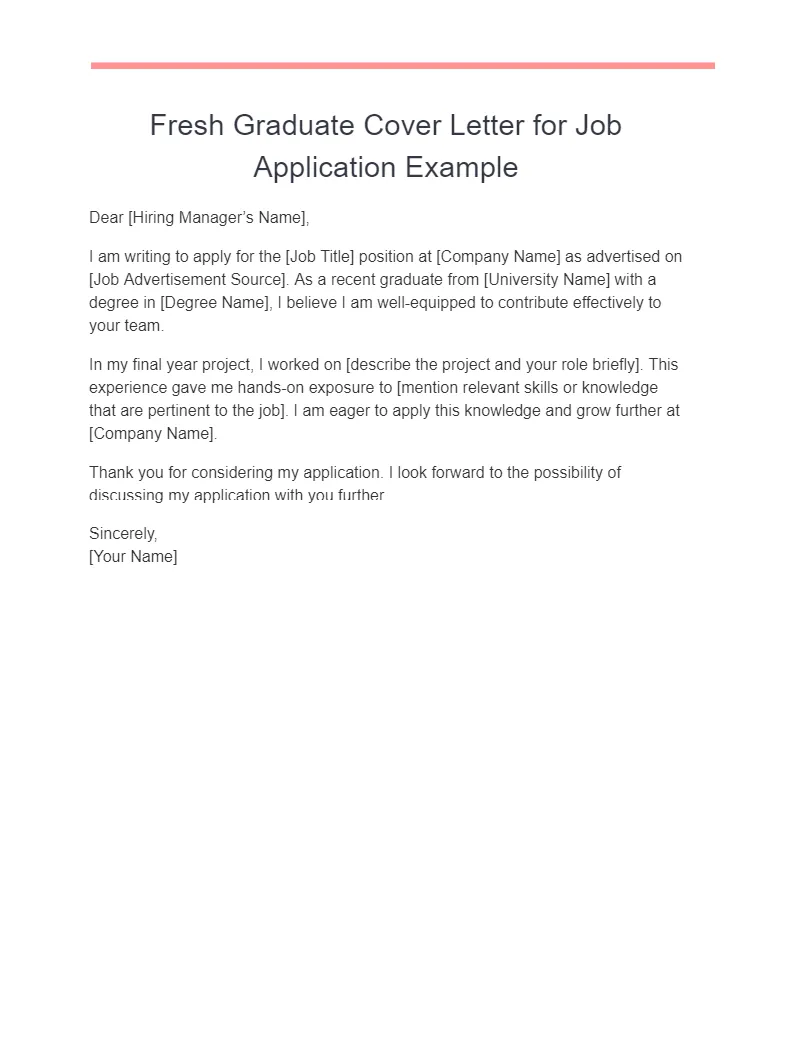Cover Letter Secrets for New Grads
As a new graduate entering the job market, the cover letter is your first opportunity to make a lasting impression. It is your chance to showcase your potential and convince the hiring manager that you are the ideal candidate. This comprehensive guide will unveil the secrets to crafting a cover letter that not only impresses but also significantly increases your chances of landing an interview. We will delve into key strategies, from highlighting your skills and experiences to understanding the employer’s needs and showcasing your achievements. Preparing a winning cover letter may seem daunting, but with the right approach, you can create a powerful narrative that sets you apart. By following these strategies, you’ll transform your job application from a routine exercise into a strategic move that unlocks your career potential. Embrace the challenge and prepare to take your job search to the next level.
Highlighting Your Skills and Experiences
For new graduates, the challenge lies in highlighting skills and experiences, especially when professional experience is limited. Focus on transferable skills acquired during your education, extracurricular activities, volunteer work, and any part-time employment. Pinpoint the skills that the employer seeks, as outlined in the job description. Then, provide specific examples of how you’ve demonstrated these skills. Did you lead a project in a student organization? Detail the challenges faced, your role, and the outcomes achieved. Did you excel in a particular academic area? Mention related coursework and projects that showcase your abilities. The goal is to demonstrate, not just state, your potential value. Don’t forget to emphasize soft skills like communication, teamwork, and problem-solving, as these are highly valued by employers. Show that you can apply your knowledge and adapt to new situations. This approach helps you stand out as a proactive and capable candidate.
Tailoring Your Cover Letter

A common error among new graduates is sending generic cover letters. Tailoring your cover letter to each job application is essential. This demonstrates that you’ve done your research and are genuinely interested in the role and the company. Start by carefully reviewing the job description. Identify the key requirements, desired skills, and values emphasized by the employer. Then, customize your cover letter to address these points directly. Mention specific projects, experiences, or coursework that align with the job requirements. Demonstrate how your skills and experiences make you an excellent fit for the position. Personalize your letter to show that you understand the company’s mission and values. Generic letters are quickly recognized and often end up in the rejection pile. A tailored letter showcases your initiative, attention to detail, and sincere interest in the opportunity.
Understanding the Employer’s Needs
Before writing, grasping the employer’s needs is essential. What are they seeking in a candidate? What challenges are they currently facing? What are their strategic goals? Research the company to understand their culture, values, and recent projects. Explore their website, social media profiles, and news articles. Identify industry trends and how the company is positioned within its sector. Use this knowledge to align your cover letter with their needs. Demonstrate how your skills and experiences can contribute to their success. Frame your letter from the perspective of what you can do for the company, not just what the company can offer you. This shift showcases your focus on delivering value and your proactive approach to the job opportunity.
Researching the Company
Conducting thorough company research is foundational for an effective cover letter. It shows employers that you’re genuinely interested and have taken the time to understand their business. Begin by exploring the company website, paying attention to their mission, values, and recent news or projects. Browse their social media profiles to get a sense of their culture and communication style. Look for any recent press releases or articles that highlight their achievements or challenges. Use LinkedIn to research the hiring manager or individuals in similar roles. Understanding their background and interests can help you personalize your letter further. Knowing the company’s current priorities and challenges allows you to tailor your letter to demonstrate how you can contribute to their goals. The more you know about the company, the more effective your cover letter will be.
Showcasing Your Achievements

Instead of listing responsibilities, showcase your achievements. What did you accomplish in your previous roles or academic projects? How did your actions contribute to the success of the team or organization? Use the STAR method (Situation, Task, Action, Result) to structure your examples. Describe the situation or context, explain the task you were assigned, detail the actions you took, and, most importantly, highlight the results. This format helps you demonstrate your impact clearly and concisely. For instance, if you were a student leader, describe a project, your role in it, the steps you took, and the positive outcome, such as increased engagement or improved efficiency. Quantifiable achievements are even more impactful, as they provide concrete evidence of your abilities. Remember to choose achievements relevant to the job you’re applying for, showcasing your capabilities and potential.
Quantifying Your Accomplishments
Quantifying your accomplishments is a highly effective way to boost your cover letter’s impact. Numbers and data provide concrete evidence of your skills and the value you bring. When possible, use specific metrics to illustrate your achievements. Rather than stating you “improved customer satisfaction,” state that you “increased customer satisfaction scores by 15% through implementation of a new feedback system.” If you managed a project, mention the budget, timeline, and achieved outcomes. Did you increase sales? Specify the percentage or dollar amount. Did you streamline a process? Highlight the time or cost savings. Quantifiable results are more persuasive than vague statements. They show that you not only did something but also achieved tangible results. This data-driven approach makes your cover letter more credible and helps employers understand the value you deliver. Providing quantifiable examples ensures your accomplishments are clearly understood and appreciated.
Formatting Your Cover Letter
The format of your cover letter is just as crucial as its content. A well-formatted cover letter is easy to read and visually appealing. Use a professional font like Times New Roman, Arial, or Calibri, maintaining a consistent font size (typically 11 or 12 points). Keep your letter to one page, using concise paragraphs and ample white space. Use a clear and logical structure with a header that includes your contact information, the date, and the employer’s information. Address the hiring manager by name if possible. Use headings to organize your content, making it easy for the reader to scan and find key information. Use bullet points to highlight key skills or achievements. Proper formatting demonstrates your attention to detail and respects the reader’s time. A clean, well-organized cover letter shows professionalism and increases the likelihood of being read and remembered.
Choosing the Right Font and Style

The choice of font and style sets the tone for your cover letter. Select a professional, readable font that is easy on the eyes. Avoid overly fancy or unusual fonts that can distract from your message. Common and safe choices include Times New Roman, Arial, Calibri, and Helvetica. Maintain a consistent font size throughout the document, typically 11 or 12 points. Use a simple and clean style. Avoid excessive bolding, italics, or underlining, as these can make your letter look cluttered. Use bolding sparingly to highlight key words or phrases. Ensure your margins are consistent and wide enough to create white space around the text. Choose a font style that reflects your personality and the industry you’re applying to. A well-chosen font and style demonstrates that you are detail-oriented and understand the importance of a professional presentation.
Writing a Compelling Opening
The opening of your cover letter is your chance to make a strong first impression. It should immediately grab the reader’s attention and make them want to read more. Avoid generic openings such as “Dear Sir/Madam” or “I am writing to express my interest.” Instead, personalize your opening by addressing the hiring manager by name (if you know it) and expressing your enthusiasm for the role or the company. Start with a hook that highlights your most relevant skill or experience. Briefly mention a project, achievement, or experience that aligns with the job requirements. Clearly state the position you’re applying for and where you found the job posting. The opening should also convey your passion for the field or the company. A compelling opening sets the tone for the rest of your letter and can be the difference between getting read and getting passed over.
Grabbing Their Attention
To truly grab the employer’s attention, go beyond the basics. Start with a strong opening that immediately highlights your value. Consider using a compelling anecdote, a relevant statistic, or a specific achievement to draw the reader in. For example, instead of saying you have strong communication skills, start with a sentence that showcases those skills in action. The goal is to pique the reader’s curiosity and make them want to learn more about you. Use action verbs to describe your accomplishments and avoid passive language. Inject your personality and enthusiasm into your writing, while maintaining a professional tone. Tailor your letter to the specific job requirements and highlight your most relevant skills and experiences. By making your cover letter stand out from the start, you’ll increase your chances of making a memorable impression.
Crafting a Powerful Middle Section

The middle section is where you demonstrate your value to the employer. This is where you provide details about your skills, experiences, and achievements. Connect your skills and experiences directly to the job requirements. Explain how your background makes you a good fit for the role. Use specific examples to illustrate your skills and accomplishments. Provide evidence to support your claims. Don’t just say you’re a good team player; describe a time when you successfully collaborated on a project. Use the STAR method (Situation, Task, Action, Result) to structure your examples. Explain the situation, the task, your actions, and the results. Quantify your achievements whenever possible. The middle section is your opportunity to shine, so be thorough, detailed, and focused on demonstrating your value to the employer.
Demonstrating Your Value
Throughout your cover letter, focus on demonstrating your value to the employer. How can you help them achieve their goals? What unique skills or experiences do you bring to the table? Tailor your letter to highlight the skills and experiences that are most relevant to the job description. Show how your skills align with the company’s needs and values. Provide specific examples of how you’ve used your skills to achieve positive results. Frame your achievements in terms of the benefits they provided. Did you increase sales, improve efficiency, or enhance customer satisfaction? Clearly articulate your value proposition. Make it easy for the employer to see how you can contribute to their success. By focusing on your value, you demonstrate that you are not only qualified but also a valuable asset to the company.
Highlighting Relevant Skills
The key to a successful cover letter is to highlight the skills that are most relevant to the job. Carefully review the job description and identify the key requirements. Then, in your cover letter, specifically address those skills. Use action verbs to describe how you’ve demonstrated those skills in the past. Provide specific examples and quantify your accomplishments whenever possible. If the job requires strong communication skills, describe a project where you successfully communicated with a team or a client. If the job requires technical skills, mention relevant software or tools you’ve mastered. Tailor your letter to the job description to ensure that you’re highlighting the skills that matter most to the employer. Show that you understand the requirements and that you have the skills needed to excel in the role.
Writing a Strong Closing

The closing of your cover letter is your final opportunity to make a positive impression. Keep it concise and impactful. Reiterate your interest in the position and the company. Summarize your key qualifications and reiterate why you’re a good fit. Express your enthusiasm for the opportunity to contribute to the company’s success. Include a call to action, such as inviting the hiring manager to contact you for an interview. Thank the reader for their time and consideration. Keep it professional and respectful. Avoid clichés or overly formal language. A strong closing leaves the reader with a clear understanding of your qualifications and your eagerness to join their team. This is your last chance to make an impact, so make it count.
Expressing Enthusiasm and Gratitude
Expressing enthusiasm and gratitude throughout your cover letter can significantly enhance your application. Let your passion for the role and the company shine through. Show that you are genuinely excited about the opportunity. Express your gratitude for the reader’s time and consideration. Thank them for taking the time to review your application. Acknowledge any assistance or guidance you received during your job search. Enthusiasm and gratitude convey a positive attitude, which is highly valued by employers. It shows that you are not only qualified but also eager to contribute to the team. Maintain a professional tone while conveying your enthusiasm and gratitude. A sincere and appreciative tone can make a lasting positive impression.
Proofreading and Editing
Before submitting your cover letter, proofread and edit it meticulously. Errors in grammar, spelling, and punctuation can undermine your credibility and detract from your message. Read your letter carefully, looking for any mistakes. Use spell-check and grammar-check tools, but don’t rely on them entirely. Proofread the letter multiple times, ideally on different days, to catch any errors you might have missed. Ask a friend, family member, or career advisor to review your letter for feedback. Fresh eyes can often catch errors that you might miss. Ensure that your letter is clear, concise, and easy to read. A polished and error-free cover letter demonstrates attention to detail and professionalism. It shows that you take pride in your work and are committed to excellence.
Avoiding Common Mistakes

Avoiding common mistakes is crucial to making a strong impression. These include: sending a generic cover letter, not tailoring your letter to the specific job, using clichés and jargon, including irrelevant information, and making grammatical errors. Do not use templates without customizing them. Avoid simply restating your resume; your cover letter should provide additional context and highlight your key accomplishments. Don’t be negative or make excuses. Avoid typos and grammatical errors. Always proofread your letter carefully. Pay close attention to the formatting and make sure it is easy to read. By avoiding these common mistakes, you’ll significantly improve your chances of making a positive impression and securing an interview. A well-crafted cover letter is your first step toward landing your dream job.
Seeking Feedback
Actively seeking feedback on your cover letter is invaluable. Ask trusted friends, family members, career advisors, or professors to review your letter. Provide them with the job description and ask for their honest opinions. Are your skills and experiences clearly highlighted? Is the letter well-written and easy to understand? Does it make a strong impression? Ask for specific feedback on the content, structure, and tone of your letter. Be open to suggestions and willing to revise your letter based on the feedback you receive. Seek feedback from multiple sources to get a variety of perspectives. A fresh set of eyes can often catch errors or suggest improvements that you might have missed. By actively seeking and incorporating feedback, you can create a cover letter that is truly impressive and effective. This iterative process will refine your letter and increase your chances of success.
